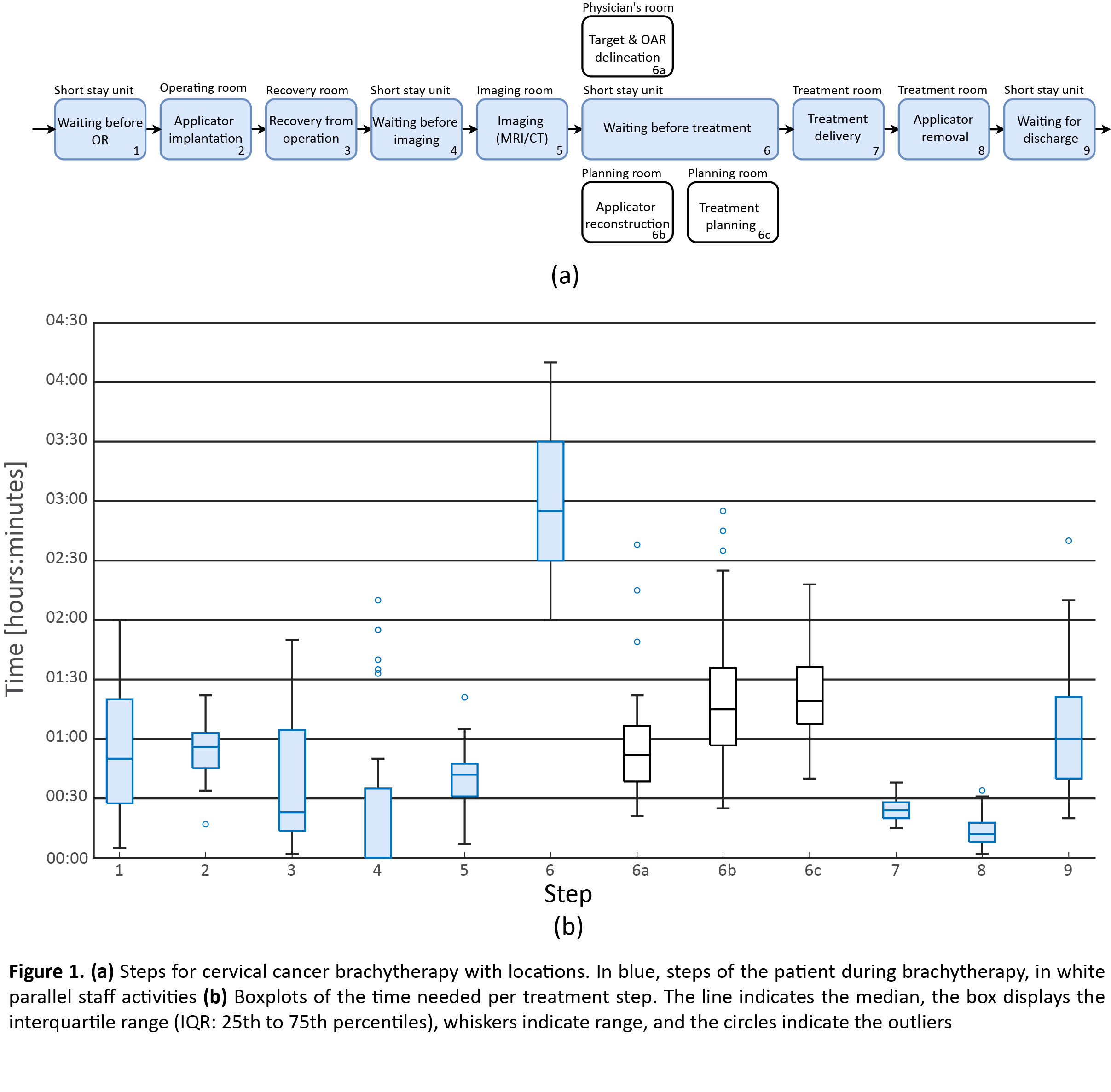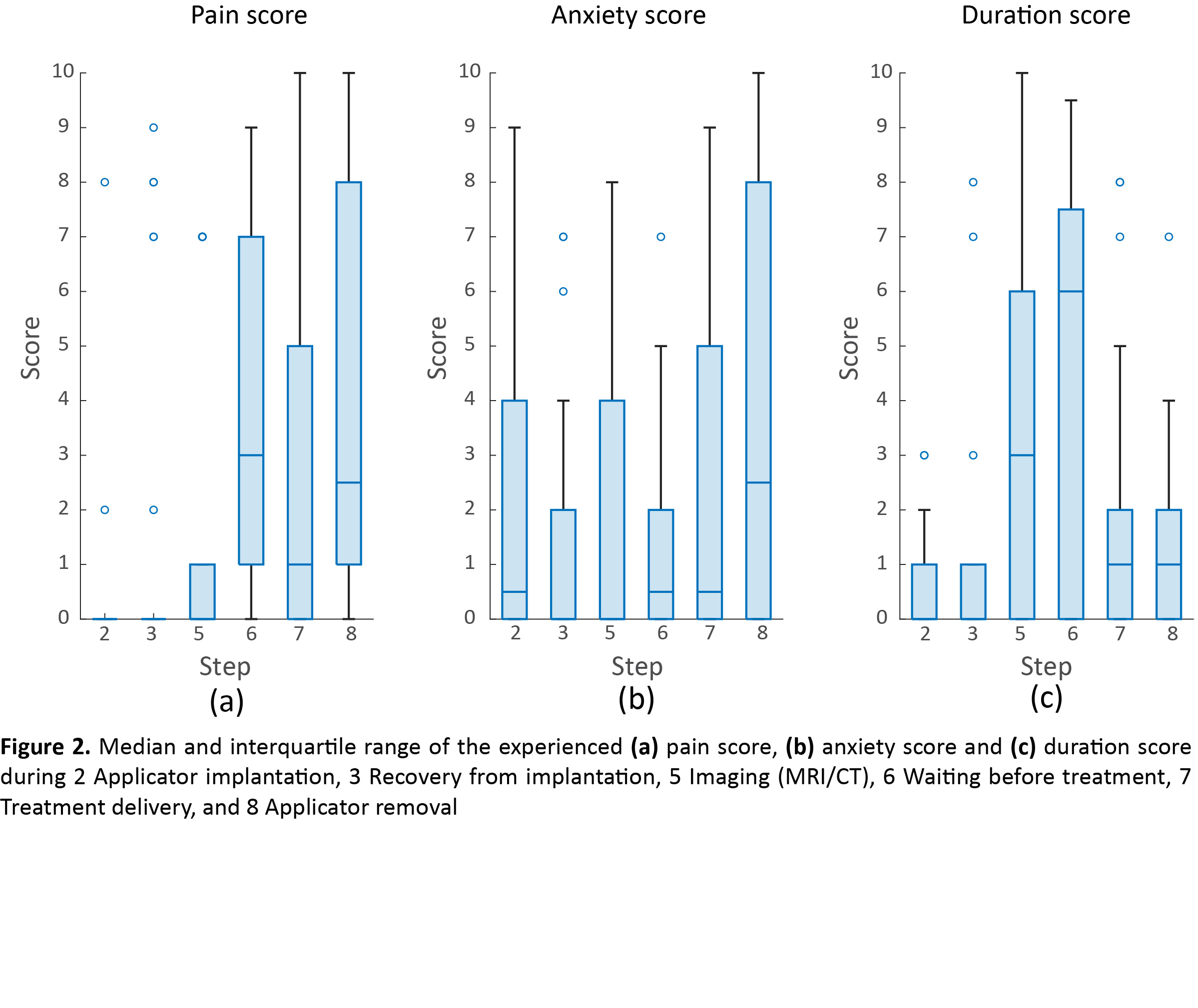Patient experience and time-action analysis during cervical cancer brachytherapy
Sharline van Vliet-Perez,
The Netherlands
OC-0444
Abstract
Patient experience and time-action analysis during cervical cancer brachytherapy
Authors: Sharline van Vliet - Perez1, Rosemarijn van Paassen2, Linda Wauben3, Robin Straathof3, Nick van de Berg4, Jenny Dankelman3, Ben Heijmen1, Inger-Karine Kolkman-Deurloo1, Remi Nout1
1Erasmus MC Cancer Institute, Radiation Oncology, Rotterdam, The Netherlands; 2Erasmus MC, General Practice, Rotterdam, The Netherlands; 3Delft University of Technology, BioMechanical Engineering, Delft, The Netherlands; 4Erasmus MC Cancer Institute, Gynaecological Oncology, Rotterdam, The Netherlands
Show Affiliations
Hide Affiliations
Purpose or Objective
Brachytherapy (BT) is
an important component of the curative treatment for locally advanced cervical
cancer. It consists of several
steps, but the impact of these steps on patient experience in terms of pain and
anxiety is still scarcely reported. The step durations can potentially
influence patient experience, but this is also not well described. The aims of
this study are to perform a time-action analysis and to determine the patient
experience during each step of the workflow.
Material and Methods
Patients treated
with EBRT and 3 or 4 fractions of HDR BT with an intracavitary/interstitial
applicator were included in a prospective study. For the time-action analysis, the
involved staff reported the time needed for each step on a standardised form which
included start and end time of each step. For the patient experience analysis,
an EQ-5D questionnaire was used to calculate the health state index (0=
equivalent to dead, 1= full health), and EQ VAS score (0= worst imaginable
health, 1= best imaginable health) at the beginning of the day to establish a
base line health status. Pain, anxiety and duration experience for each
treatment step were assessed with a numeric rating scale questionnaire (0= the
perfect situation, 10= worst possible situation). The median and interquartile
range was provided for all parameters.
Results
A total of
30 patients (69 fractions) were included for the time-action analysis of which 13
patients (28 fractions) were also included for the analysis of the patient experience.
The total procedure time, expressed in hours:minutes, from arrival at BT
department till discharge was 8:55 (8:00-9:25). For the separate steps, the durations are
shown in Figure 1. The target & OAR delineation and applicator
reconstruction are done concurrently while the patient is waiting before
treatment.
A health state index score of 0.82 (0.67-1.00) was calculated from individual
health profiles of the EQ-5D using a specific value set of the Netherlands. The
EQ VAS score was 0.80 (0.63-0.88). During 20 of the 28 fractions, patients had
no to slight pain at the beginning of the day, and during 18 of the 28
fractions, patients had no to slight anxiety. During treatment, patients had
the highest pain score during waiting before treatment (3 (1-7)), the highest
anxiety score during applicator removal (2.5 (0-8)), and the highest duration
score for waiting before treatment (6 (0-7.5)). Figure 2 gives an overview of
scores in different steps. The large variations in scores points at inter- and
intra-patient variations.
Conclusion
This time-action
analysis highlights the importance of logistics between different steps during
cervical cancer brachytherapy. Pain, and anxiety scores were found to be
highest during waiting time before treatment and applicator removal with large
inter- and intra-patient variations. In the future, the time-action and patient
experience analysis can be used to optimise different steps of the
brachytherapy treatment.

